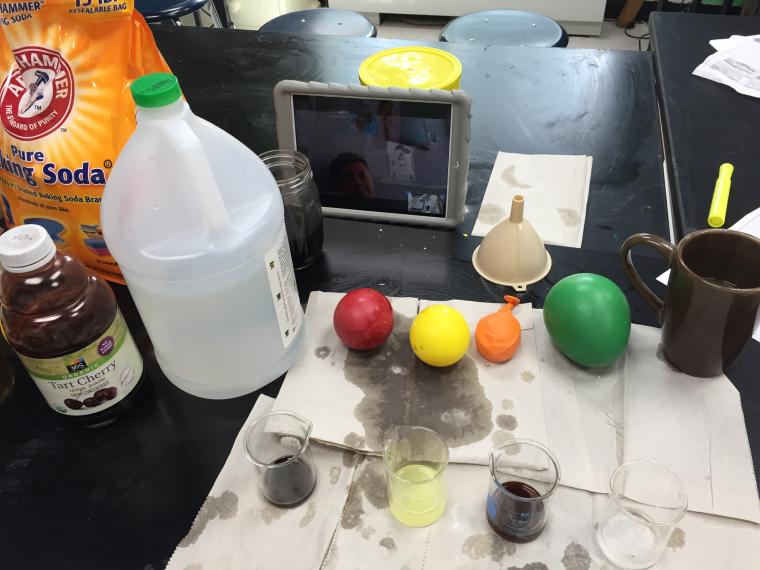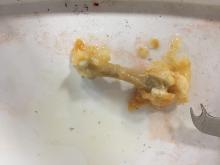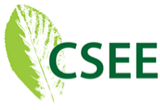Experimenting around the Scientific Method
Intermediate students in Science Teacher Liz Bilbao's class learned about the scientific method using chicken.

To explore the scientific method, the class made a hypothesis based upon their observations of acidic liquids in past experiments, making predictions about which liquid would have the greatest reaction: tart cherry juice, lemonade, vinegar, or coffee. Each liquid was placed in a balloon, then the experimenters added baking soda and quickly tied the balloons. Students then made more observations and were able to draw a conclusion.

The chicken bones were soaked in vinegar for six months — from the time campuses closed in March because of the pandemic until early September. Students witnessed the vinegar reacting with the calcium, causing the bone to became rubbery.


